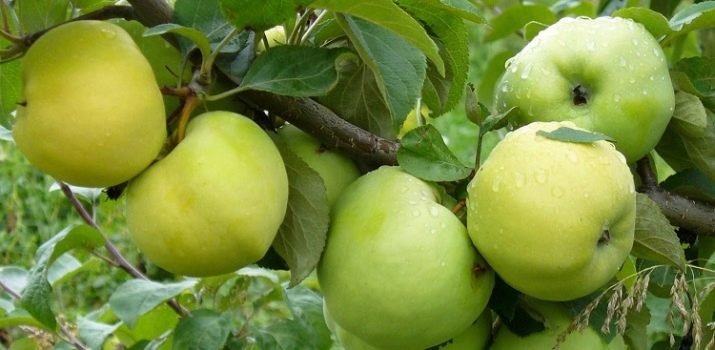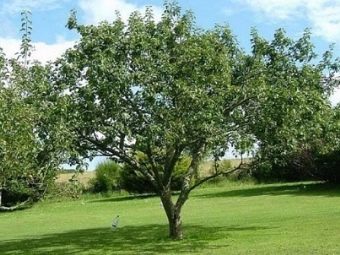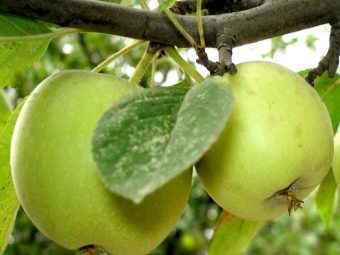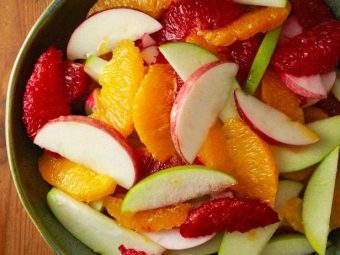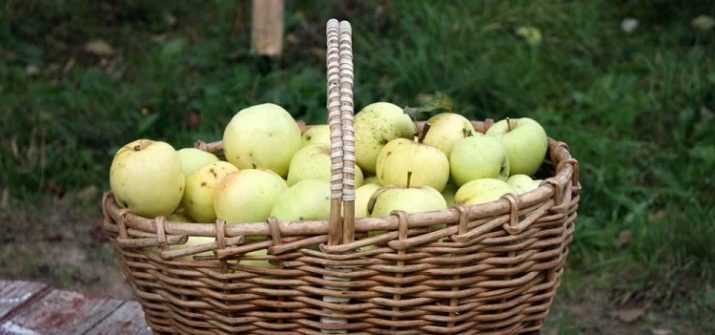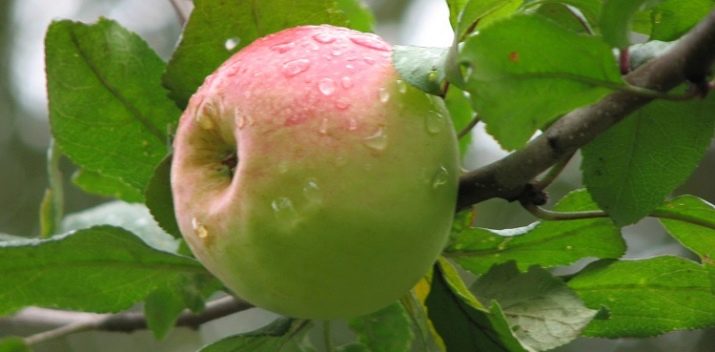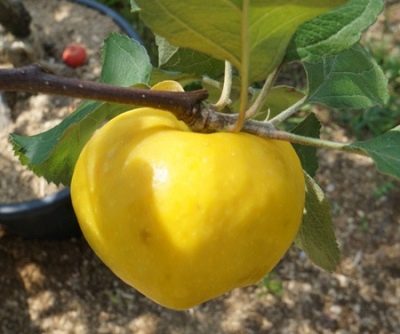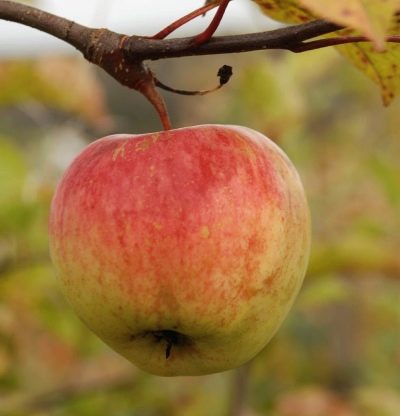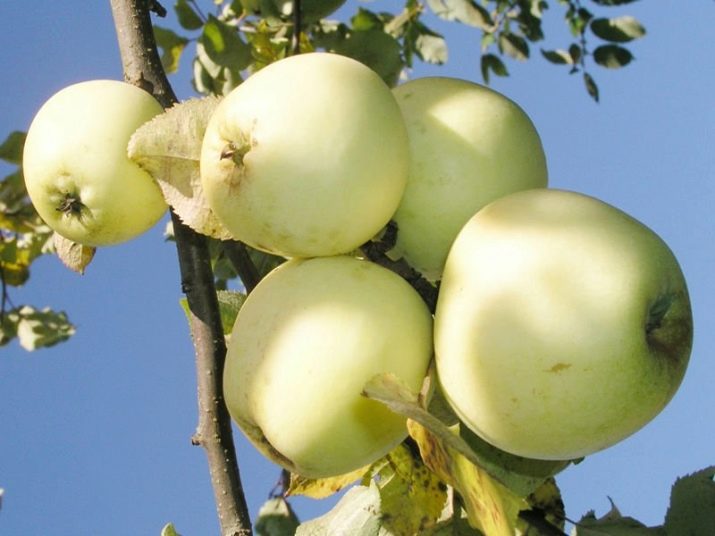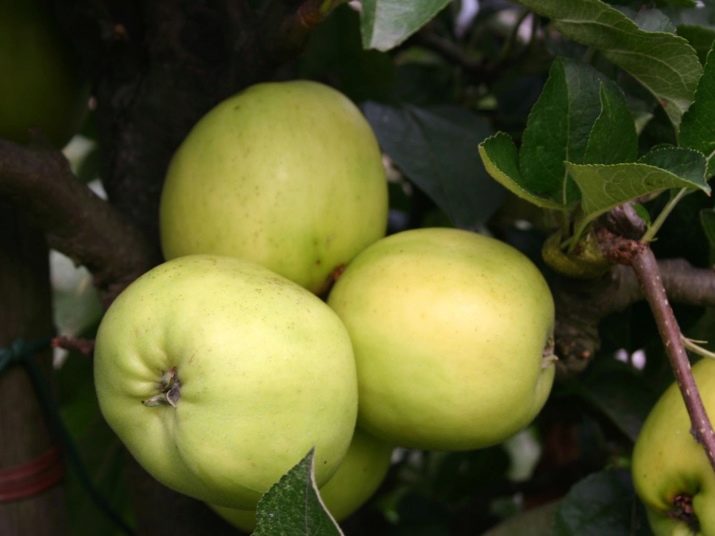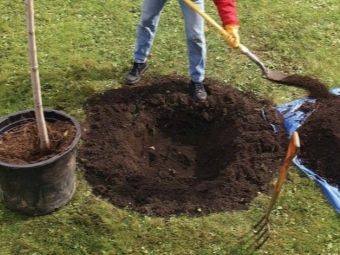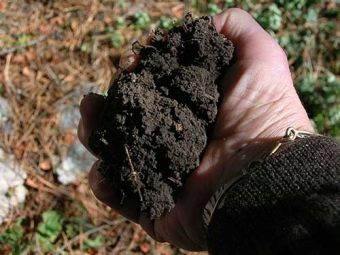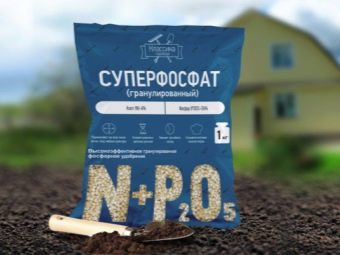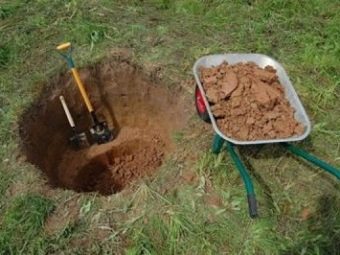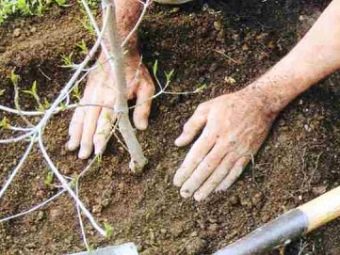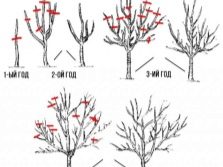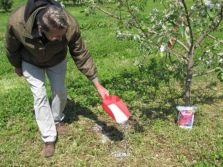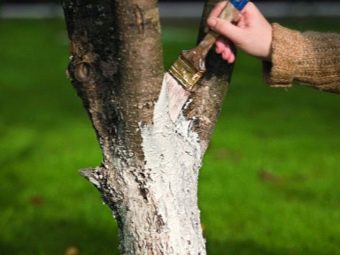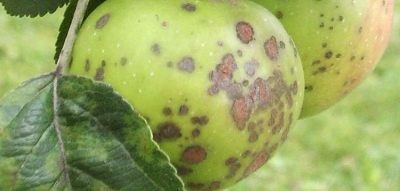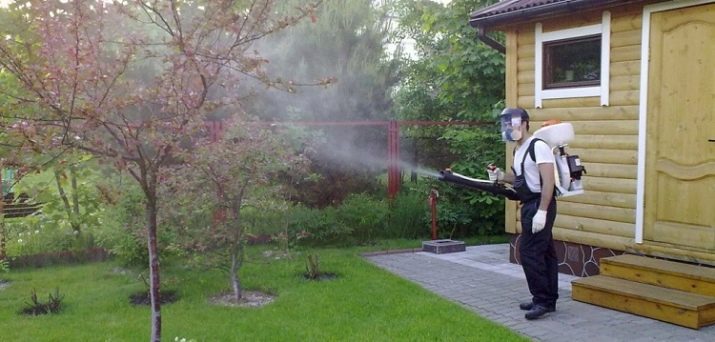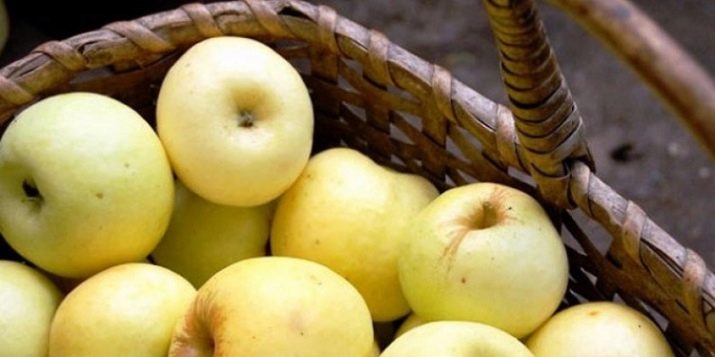Apple tree "Antonovka": description of the variety, variety and cultivation
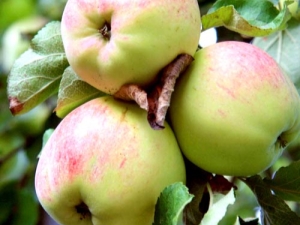
Apples of the Antonovka variety have been known to everyone for quite a long time - some gardens have preserved trees whose age has stepped over a 150-year milestone. It is believed that this variety was bred in Russia as a result of popular selection, but in the past century, this species became known far beyond the borders of our country. Today, Antonovka is cultivated in many European countries, as well as in Africa and some parts of Asia.
Features of the variety
There is a legend that Antonovka got its name from the name of a simple gardener Anton, who first crossed a wild apple tree with an unknown cultural subspecies. Presumably, this happened in the Kursk region, the climatic conditions of which are very favorable for speciation. All the other subspecies of this plant appeared in the course of the daughter cross-breeding of the very “Antonovka” with various other apple species.
Today it is quite difficult to say how many subspecies exist that can rightfully be attributed to Antonovka, many gardeners believe that this variety was so popular only due to the huge number of new varieties developed not so long ago.
Nevertheless, all trees of this type have a number of common features in the description of the variety. The plants themselves are considered tall - their height can reach 5-6 meters. The crown is usually oval, but as the age of the plant increases, it increases and gradually becomes rounded. The main branches are usually directed upwards, but as they grow and develop, they often fall and start to grow in different directions, most often this occurs at the beginning of the fruiting period.
The bark has a brown tint, the leaves are saturated green, slightly elongated with jags along the edges. This variety blooms with white flowers with an unobtrusive pink tint, inflorescences are quite large. Pollinators - all habitual insects (butterflies. Bees and the like). “Antonovka” has a high yield - it increases from year to year and by the age of 20, up to 200 kg of juicy and ripe fruits can be harvested from one tree.
However, it should be borne in mind that if in the first years, fruiting occurs regularly, then with age the crop does not appear every year, but periodically. This may depend on the phase of development of the apple and weather conditions.
The apples are juicy, sweetish, with a rich aroma. They contain large amounts of vitamin C, pectin and other micro and macro elements that have the most beneficial effects on the human body. The principal difference between “Antonovka” and all other varieties is the reduced percentage of sugar - this speaks better than any words about the low calorie content of the fruit and its exceptional usefulness.
Fruits differ in excellent keeping quality and do not spoil their presentation during transportation. They can be stored for up to four months, and many note that as they are stored, their taste characteristics only improve. Antonovka variety apples are recommended for children and adults in the complex therapy of many diseases, its beneficial properties are high:
- due to the presence of iron significantly increase hemoglobin;
- normalize the functioning of the kidneys and the entire urinary system;
- reduce the risk of developing cardiovascular pathologies and the appearance of heart attacks;
- normalize the digestive system, improve intestinal motility;
- reduce cholesterol;
- can be used as a prophylactic agent for the prevention of varicose veins and other problems with blood vessels.
Antonovka apples can be used by diabetics due to their reduced glucose content, and in addition, it helps to cure viral and colds as quickly as possible. Apples "Antonovka" are used raw, introduced into fruit salads, they can serve as raw material for making jam, juice and marshmallow.
Advantages and disadvantages
The popularity of Antonovka is due to its exceptional merits, among which there are several main ones.
- Good winter hardiness - the plant does not require shelter, it tolerates the harsh winters inherent in most of Russia and neighboring countries.
- Increased yields - existing bikes about getting yields per tonne from individual trees are far from fictional. With proper care and favorable growing conditions, the productivity of a variety can be very high.
- Ecological adaptability to external adverse factors - “Antonovka” easily adapts to the most varied climatic features of a particular region.
- Good immunity to common diseases of apples - the incidence rate is reduced to an average only in the most unfavorable periods.
- Long-term storage, the possibility of various uses, suitability for soaking.
- Exquisite taste and aroma of fruit.
- The increased content of pectin, thanks to which apples can be used for making marmalades and marshmallows.
- The ability to transport and long-term storage.
- Resistance to prolonged drought.
The disadvantages include the lack of regular fruiting of adult plants, as well as the rapid loss of presentation of fruits in the southern regions. In addition, "Antonovka" often amazed moth.
Kinds
Under the name "Antonovka" combines a large number of varieties and subspecies of apple trees. 25 cultivars are officially known, they all took from their “parent” good scab resistance, good keeping quality, unusually refined taste and smell, as well as reduced sugar content. Classic cultures are considered to be several cultures.
- "Dessert Antonovka" - this variety was bred by S. I. Isaev, a breeder from the classic “Antonovka” and “Pepin saffron”. The plant belongs to artificially bred hybrids of medium winter type with a medium-length shrub. The crown in the shape of a sphere, as the plant grows, becomes round. The leaves are slightly compressed, green, have a notch at the edges. Blooming pink and white. Fruits are distinguished by a light green color with a slight beige shade and brownish-striped "tan". The weight of fruit reaches 200 g, the taste is sweet-sour, with a characteristic smell. From each tree you can collect from 40 to 110 kg, and the first harvest can be obtained in the third year of the plant.
Most often, this culture is found in the southern regions of Russia, in the central zone, as well as in Ukraine and Belarus. Cultivation is permitted in the northern regions, but frost-resistant rootstocks are used there.
- "Golden Antonovka" obtained from several domestic varieties "Antonovka". By the time of ripening, it refers to late-ripening varieties, harvesting is carried out at the very end of summer, which is why fruits of this type cannot lie too long and are grown, as a rule, only for personal use. Taste and smell unobtrusive. The weight of each apple is about 150-170 g, although there are specimens that weigh up to 250 g. As the name implies, the rind is colored straw-colored with a pronounced golden hue. “Golden Antonovka” tolerates frost well, begins to bear fruit 5 years after planting, it is resistant to scab.
- "Antonovka new" - it is artificially derived hybrid from the common variety and variety "Grandma". Trees have high yields, which in some years can be 200 kg per tree. There are cases when under favorable conditions, the yield reached 445 kg. Each fruit weighs about 120 g, in rare cases - 190-200. The form is onion, there is some ribbing. The rind is light with a straw tint, while the side closer to the sun has a reddish tint. The pulp on the cut is dense, juicy, white. Taste is sweet and sour with spicy notes, aroma quite moderate.
This variety is characterized by medium resistance to frost, so it is most often grown in the central regions of Russia and in the Black Soil Region. Resistance to scab is slightly lower than that of the parent variety, berries and leaves often suffer from this pathology, so growing without spraying with biological and chemical preparations is impossible.
- "White Antonovka"- is the seedling of the original apple tree, most often found in old gardens and farms of past years. Gives quite large fruits with a light green skin. It has a sour taste and a slightly spicy scent.
- "Sweet Antonovka" - as a whole, it retains all the features and properties of the classical one, however, it has a slightly higher content of sugars, in connection with which it is rarely used for soaking. In addition, the fruits do not have the same sourness, which is so fond of all fans of the variety, fresh-sweet fruits are not valuable for commercial cultivation, so this type of apple is grown in our time is quite rare.
Planting and care
"Antonovka" should be planted in early spring immediately after the snow melt. To do this, choose one- or two-year-old seedlings, which experienced gardeners acquire in advance, in the fall, and in winter they are kept in the basement at a temperature of 1-5 degrees.
The landing pit is also prepared before the onset of winter.
When choosing a site under the “Antonovka”, it should be borne in mind that as the tree grows, the crown of the tree grows strongly, therefore it is necessary to maintain a distance of at least 4 meters between neighboring plants. If dwarf varieties are purchased, the distance may be slightly less.
“Antonovka” reacts poorly to overwetted soil, so it should not be planted in areas with high groundwater. It is optimal to take place for it on a small slope from the south or southeast side so that the tree is protected from drafts and cold wind from the north. At the same time, the sun's rays should have free access to the plant, its crown should be able to be ventilated - only in this case large and juicy fruits can be obtained.
The soil of an apple tree of this type requires drained, black soil and loam is most suitable. “Antonovka” has a branched root system, which goes 0.7 meters deep and takes up to 1.2 meters in diameter. That is why the minimum dimensions of the landing pit should be appropriate, and on poor lands they should be increased in order to fill the root zone with nutritious soil and fertilizers.
The pit is preferably filled with a mixture of equal parts of chernozem, humus and peat. For clay and loamy soils, you can add sand. For every 10 kg of the mixture, an additional 250-300 g of wood ash and about 25 g of superphosphate are injected. With such a composition, the pit is filled to the top and covered with a film or agrofiber for the winter.
They start planting in spring, when nature has not yet fully awakened, but the buds on fruit trees are already preparing to swell, as a rule, this happens when the temperature of the soil warms up to + 5 ... 10 degrees.
Consider how the order of landing works.
- Saplings are taken from the place of winter storage and for a couple of hours soaked its roots in plain water, you can add a few drops of "root" or other root stimulant.
- While the plant is soaking, a well is formed, so that the roots of the prepared seedlings can easily fit in it. At the bottom, they make a small hillock and, a little apart from the center, drive wooden pegs about a meter high. If desired, you can shoot down two on opposite sides of the hill.
- The seedling is lowered into the planting pit and buried so that the root collar is located exactly along the top of the knoll, and the roots themselves spread on its sides.
- The pit is covered with earth, which was removed from it, slightly compacting it, while it is important that the root collar remains at ground level.
- A young plant is tied to a peg with special elastic bands.
- After planting, the land in the ring wheel is watered heavily.
- At a distance of about 1.2 meters from the ground, the top of the plant is cut, and the side branches are shortened by 20-25%.
- After 3 days after planting, the earth is covered with mulch, optimal use of needles or sawdust.
“Antonovka” is a rather unpretentious variety of apple trees, and caring for it does not require much effort.
In the early years, regular and abundant watering is very important. Up to 4-5 years of age, the plant requires at least 10 irrigations per season, as they grow older, their frequency is reduced, and in adulthood, you can do with 2-3 moistenings in dry years, and do without them in rainy summer. Three years after planting, you can begin feeding the apple.
- Every year, under digging, you should make a superphosphate or any other phosphorus-containing fertilizers at the rate of 30 g per square meter.
- Top dressing with nitrogen (urea, nitroammofoska, ammonium nitrate) is introduced during summer irrigation - the composition is dissolved in water.
- Every three years in the fall, humus or lower peat is brought into the ground so that about 5-6 kg of organic matter per square meter of land.
- In the summer, every 2-3 weeks they conduct liquid supplements with extract of mullein (2 to 10), bird droppings (1 to 10), and fermented infusion of fresh grass (1 to 2).
In the first years of a plant's life, it is necessary to correctly form its crown. Traditionally used sparse-tiered scheme, but for medium-grades palmette or cup-shaped form is allowed. In addition to the formative pruning, from time to time it is also necessary to carry out a regulating one, in which a thick crown is thinned out - this allows air and sunlight to reach the branches. In this case, remove all the branches that grow inside the crown or up, as well as intersecting.
Dry and damaged shoots should be completely removed. In any case, pruning is carried out in early spring before the start of sap flow, and the cut point is treated with garden pitch.
Disease protection
It is believed that "Antonovka" has good immunity to garden diseases. However, plant growth and maintenance conditions largely influence the plant immunity. In areas with a damp, cool climate, apple trees often fall prey to scab, in places with warm winters, foliage often encounters powdery mildew and, moreover, the plant can “become familiar” with garden pests everywhere.
To avoid unpleasant consequences, it is important to pay attention to preventive work, they are standard for all fruit crops:
- in the fall, all fallen leaves should be collected and destroyed;
- shortly before the onset of cold weather, it is imperative to dig up the earth on the site, paying particular attention to the near-forest zone;
- whitewash is required annually;
- in late autumn and early spring, all branches and branches should be sprayed with copper sulfate solution;
- before the start of sap flow, you should try to have time to treat the plant with strong pesticides, such as DNOC and Nitrafen;
- To prevent insect infestation, treatment with insecticides such as “Decis” and “Fufanon” is carried out three times per season, before flowering, immediately after it and ten days after the second spraying;
- to reduce the risk of scab, you can resort to the treatment of fungicides "Chorus", "Fitosporin" or "Skor".
Most often, Antonovka is affected by fungal diseases, the most dangerous of which is scab. Its pathogen overwinters in plant debris, and with the onset of the first heat it wakes up and is transferred by the wind to the crown of fruit trees. There, thanks to its mucous membrane attached to the bottom of the leaf plates and waiting for heat. As soon as the air temperature warms up to + 17 ... 20 degrees, the spores begin to germinate.Already after a couple of weeks on the leaves you can see spots of a light olive shade, which by summer change color to brown, their inner part cracks and dries. Immediately after this, the scab spreads to fruits that are partially necrotic and become unsuitable for human consumption.
In the absence of timely treatment, the lesion can affect 100% of the crop, so at the first signs of the disease, the plant should be treated with Strobi - this compound has proven to be effective in fighting scab, it blocks its spores and prevents the development and spread of infection.
Slightly less often, “Antonovka” is affected by powdery mildew, most often it occurs after warm winters, when the temperature did not fall below +18 degrees, since fungus spores die during more severe frosts. Determine the damage can be on the white bloom, which are covered with green shoots. It is very important to carry out timely processing - here you can use the same preparations as with scab.
As for garden pests, the moth, which is a small light brown butterfly about 2 cm long, brings the greatest harm to the apple tree. It lays eggs on the upper part of the leaves immediately after flowering, light pink caterpillar larvae creep out of them later, which immediately crawl into the ovary of the fruit and feed on it with young seeds of apples.
Among the other pests are the most common apple flowering beetle, scyphocoa and aphid. However, they rarely attack “Antonovka”, therefore, to prevent their destructive impact, ordinary preventive measures are enough.
Reviews
Nowadays, Antonovka can be found in many gardens, it is quite difficult to confuse with other varieties of apple trees due to its great taste and specific aroma, which only increases with time.
If you believe reviews of gardeners, without “Antonovka” a garden is not a garden, since at least one tree must be present in the garden, it is most often combined several varieties to get tasty, but slightly different in taste, ripening and storage conditions.
Many people note the high yield of the variety and good resistance to adverse conditions, Antonovka does not require special care and can bear fruit even with adverse external factors.
Of the undoubted advantages of the hostess are the versatility of “Antonovka” - it can be squeezed into juice, processed into jam, jam, marshmallow and marmalade. “Antonovka” can be wetted and boiled compotes out of it. Thanks to a specific taste, apples are used to make charlottes and sweet-stuffed pies.
The disadvantages are the lack of regular fruiting of adult plants. Gardeners allocate successful and unsuccessful years, sometimes the fruits do not appear at all.
In the next video you will find a brief overview of the variety of apple trees "Antonovka".

